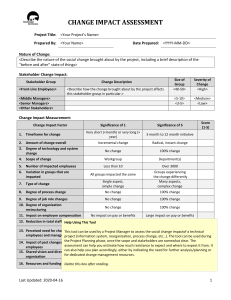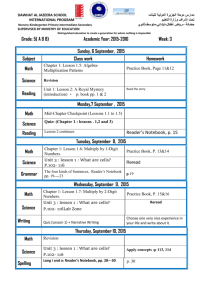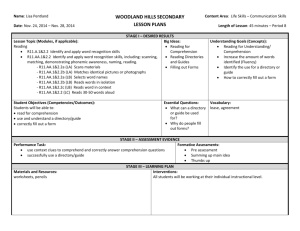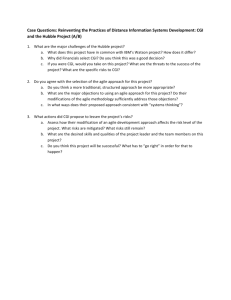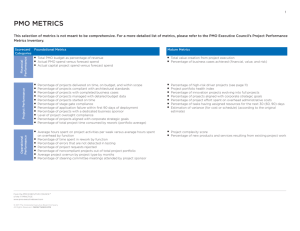AD6MX
advertisement
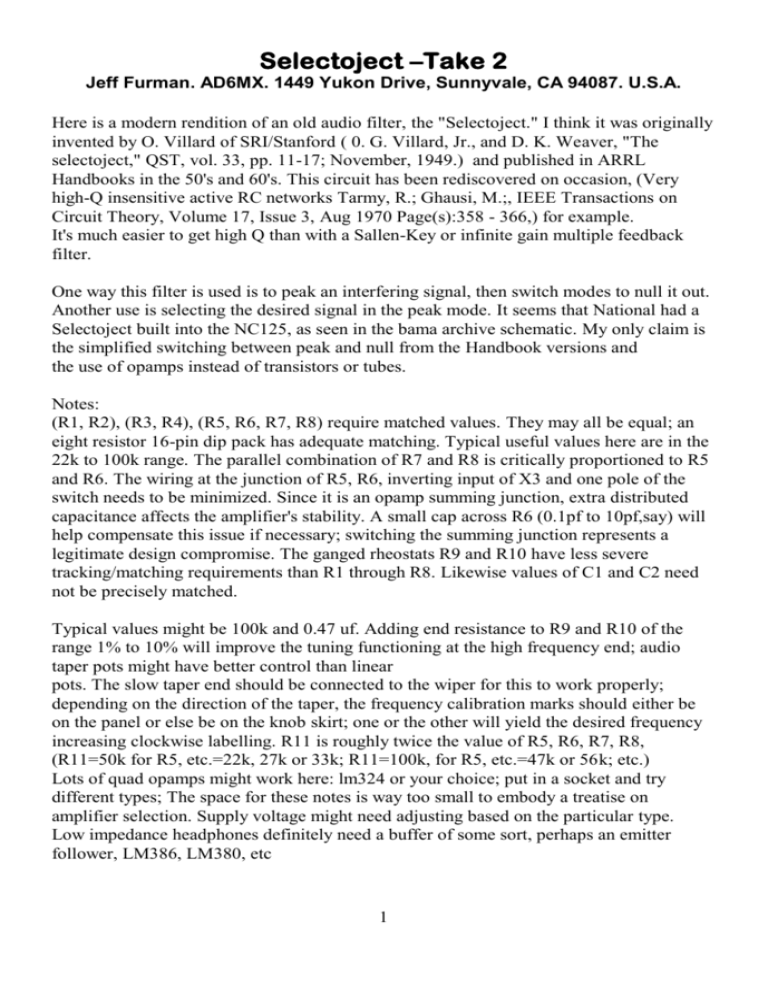
Selectoject –Take 2 Jeff Furman. AD6MX. 1449 Yukon Drive, Sunnyvale, CA 94087. U.S.A. Here is a modern rendition of an old audio filter, the "Selectoject." I think it was originally invented by O. Villard of SRI/Stanford ( 0. G. Villard, Jr., and D. K. Weaver, "The selectoject," QST, vol. 33, pp. 11-17; November, 1949.) and published in ARRL Handbooks in the 50's and 60's. This circuit has been rediscovered on occasion, (Very high-Q insensitive active RC networks Tarmy, R.; Ghausi, M.;, IEEE Transactions on Circuit Theory, Volume 17, Issue 3, Aug 1970 Page(s):358 - 366,) for example. It's much easier to get high Q than with a Sallen-Key or infinite gain multiple feedback filter. One way this filter is used is to peak an interfering signal, then switch modes to null it out. Another use is selecting the desired signal in the peak mode. It seems that National had a Selectoject built into the NC125, as seen in the bama archive schematic. My only claim is the simplified switching between peak and null from the Handbook versions and the use of opamps instead of transistors or tubes. Notes: (R1, R2), (R3, R4), (R5, R6, R7, R8) require matched values. They may all be equal; an eight resistor 16-pin dip pack has adequate matching. Typical useful values here are in the 22k to 100k range. The parallel combination of R7 and R8 is critically proportioned to R5 and R6. The wiring at the junction of R5, R6, inverting input of X3 and one pole of the switch needs to be minimized. Since it is an opamp summing junction, extra distributed capacitance affects the amplifier's stability. A small cap across R6 (0.1pf to 10pf,say) will help compensate this issue if necessary; switching the summing junction represents a legitimate design compromise. The ganged rheostats R9 and R10 have less severe tracking/matching requirements than R1 through R8. Likewise values of C1 and C2 need not be precisely matched. Typical values might be 100k and 0.47 uf. Adding end resistance to R9 and R10 of the range 1% to 10% will improve the tuning functioning at the high frequency end; audio taper pots might have better control than linear pots. The slow taper end should be connected to the wiper for this to work properly; depending on the direction of the taper, the frequency calibration marks should either be on the panel or else be on the knob skirt; one or the other will yield the desired frequency increasing clockwise labelling. R11 is roughly twice the value of R5, R6, R7, R8, (R11=50k for R5, etc.=22k, 27k or 33k; R11=100k, for R5, etc.=47k or 56k; etc.) Lots of quad opamps might work here: lm324 or your choice; put in a socket and try different types; The space for these notes is way too small to embody a treatise on amplifier selection. Supply voltage might need adjusting based on the particular type. Low impedance headphones definitely need a buffer of some sort, perhaps an emitter follower, LM386, LM380, etc 1 2
